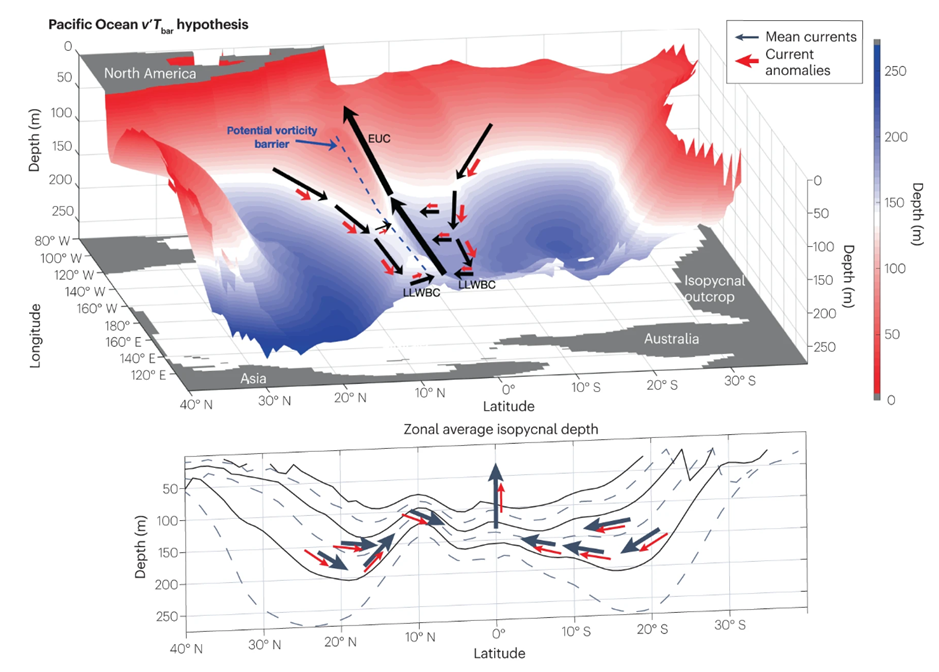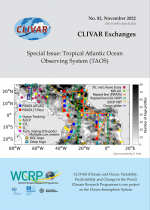Tropical Pacific Decadal Variability Mechanisms

Figure 1: The "v_prime T_bar" mechanism, schematically illustrated with mean (black arrows) and anomalous (red arrows) flows, which reveal how flow along constant-density surfaces connects the subtropics to the tropics. Both "v_prime T_bar" and "v_bar T_prime" mechanisms have been proposed as potential contributors to tropical Pacific decadal variability ('prime' denotes anomaly and 'bar' long-term average). EUC: equatorial undercurrent; LLWBC: low-latitude western boundary current.
The Tropical Pacific Decadal Variability (TPDV) Working Group of the CLIVAR Pacific Region Panel recently published a review paper that evaluates our understanding of the mechanisms behind TPDV. TPDV encapsulates natural climate variations that occur at quasi-decadal to multi-decadal timescales (7-70 years), representing the tropical expression of the Pacific decadal oscillation in the North Pacific and the interdecadal Pacific oscillation over the entire basin. Its positive phase is characterized by warm sea surface temperature anomalies over the tropical Pacific and cool anomalies in the central and western midlatitudes of both hemispheres. TPDV has important ramifications on climate and environment across the globe. It modulates the characteristics and impacts of the El Nino Southern Oscillation (ENSO), and the rate of change of globally averaged surface temperature. Thus, understanding and predicting TPDV are critical for society, particularly as the globe continues to warm under increasing greenhouse gas forcing.
The mechanisms for TPDV are complex and often competing, and may not be realistically captured by different climate models, thus hampering accurate climate predictions. TPDV could result as a residual of ENSO variability, or from equatorial upwelling of temperature anomalies from the subtropics, or changes in the equatorial upwelling itself, or a combination of these. Adding to the complexity, these oceanic mechanisms could be driven by atmospheric forcing from processes outside the tropical Pacific, including from the Atlantic, Indian, and extratropical oceans. No final consensus exists on the relative importance and efficacy of all these processes, but the tropical ocean adjustment to varying wind forcing likely plays a key role in the origin of decadal timescales. These processes are elucidated in this review paper which is a product of rigorous discussions at several virtual meetings over the span of two years since the working group’s establishment in May 2021.
(Summary edited by Antonietta Capotondi)
The full article can be accessed from https://www.nature.com/articles/s43017-023-00486-x
-----------------
Capotondi, A., McGregor, S., McPhaden, M.J. et al. Mechanisms of tropical Pacific decadal variability. Nat Rev Earth Environ 4, 754–769 (2023). https://doi.org/10.1038/s43017-023-00486-x













